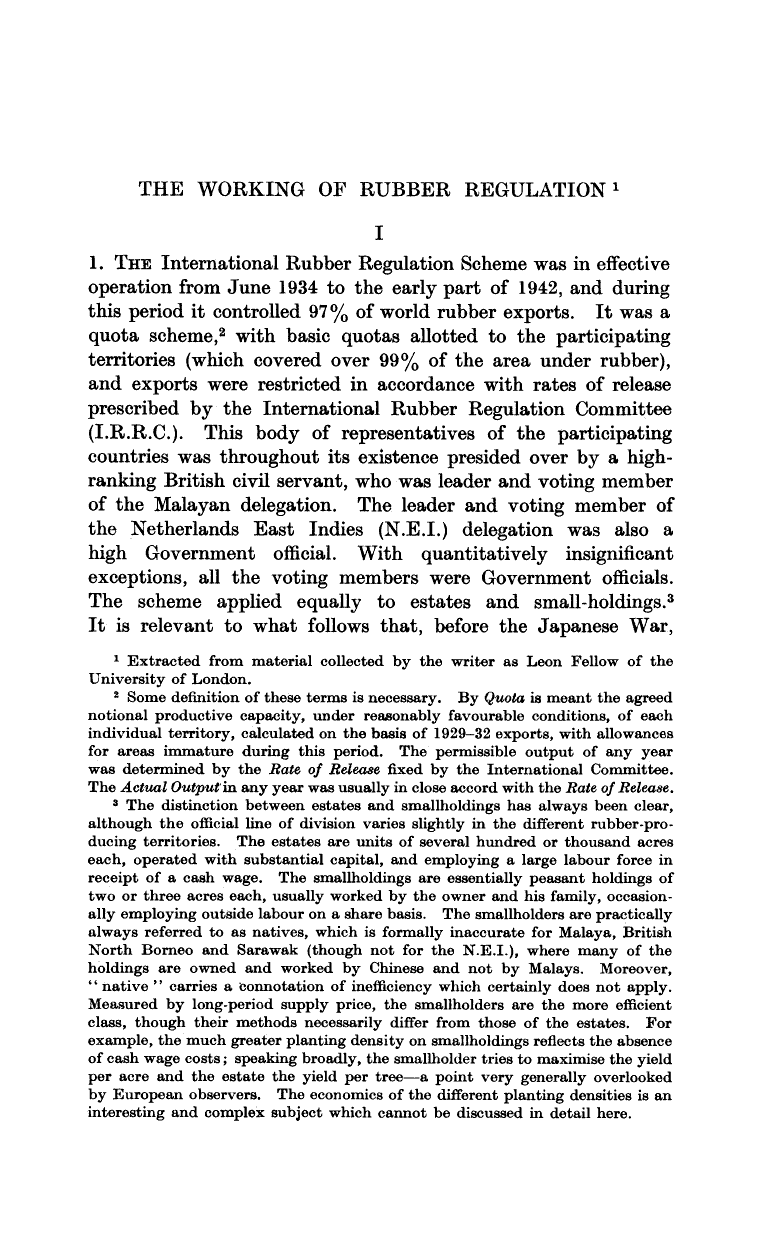Brief History of Rubber in Malaya
1876
- Sir Henry Alexander Wickham smuggled 70,000 Amazonian rubber tree seeds from
Brazil to Kew Gardens. Only 2,700
germinated.
1876
- 1,919 rubber seedlings reach Ceylon, planted at Henarathgoda Botanical
Gardens
1877
- 22 rubber seedlings from Ceylon send to Singapore, 11 planted in Singapore
Botanic Gardens, 9 send to Kuala Kangsar, 2 to Malacca
1879
- 28 rubber seedlings from Ceylon send to India and Burma
1895
- Henry Nicholas Ridley discover rubber tapping technique
1897
- 345 acres of rubber plantation in Federated Malay States
1905
- 43,435 acres of rubber plantation in Federated Malay States
1922
- 2,260,000 acres of rubber plantation in Malaya1925 - establishment of Rubber Research Institute of Malaya ( RRIM )
1956 - establishment of Federal Land Development Authority ( FELDA )
1973 - establishment of Rubber Industry Smallholders Development Authority ( RISDA )
1988 - establishment of Malaysia Rubber Board ( MRB ).
2000 - establishment of Malaysia Rubber Council ( MRC )
1922 - 1928 Stevenson Restriction Scheme
Following
WW1 (1914-1918), demand for rubber diminished, creating a glut of rubber on the
market and very low prices.
Around
1920 the British Rubber Growers Association turned to then Secretary of State
for the Colonies, Winston Churchill, for help. Churchill initiated the Rubber
Investigation Committee chaired by Sir James Stevenson, to come up with a plan
to stabilize rubber prices. The committee came up with the Stevenson Plan which
would stabilize prices by limiting the tonnage of rubber exported. The plan was
enacted by the governments of Ceylon and British Malaya.
The
Federal Legislative Council of the Federated Malay States passed the Export of
Rubber (Restriction) Enactment in October 1922, to take effect on November 1
The
Stevenson Plan ends on November 1, 1928.
Rubber producers returned control of rubber prices to the free market. But the Great Depression in the 1930s, rubber
price dropped to record low.
1934 – 1942 International Rubber Regulation Scheme
After
the stock market crash of 1929 the Great Depression hit the United States and
rubber demanded once again softened. It was in this context that the
International Rubber Regulation Agreement was implemented. The Agreement was enacted in 1934 between the
United Kingdom, the Netherlands, France, India, Burma, Ceylon, Siam, Sarawak and
British North Borneo to restrict the rubber supply in accordance with the
decline of rubber prices to maintain rubber prices and profitability of rubber
producing firms.
Under
the plan, a "Bank" system was established crediting European Estates
with estimated output and export of natural rubber. Rubber Export Coupons were issued of
native smallholder planters.
The
coupons were printed in Kuala Lumpur by the Survey Department of the Federated
Malay Sates. Coupons were issued for the following states and years:
- Federated Malay States 1935-42
- Straits Settlements Mainland 1938-42
- Johore 1934-42
- Kedah 1934-42
- Kelantan 1934-42
- Terengganu 1941-42
- Singapore & Penang Island 1936
- Penang Island 1941-1942
- Singapore Island 1941
- Sarawak 1940-1942
- B L & P 1941
From
1940 the reverse of coupons remained blank with the exception of Sarawak where
the value was indicated by the number and size of the stars on the ornate
reverses.
In
the late 1930s some of the smaller growers found it more profitable to sell
their coupons for cash, or exchange them at the local stores for provisions,
rather than harvest and sell their allowance of natural rubber. It is said that
at times a 1 Picul coupon could be exchanged for more than $100.00, creating
the expression "Paper Rubber".
Source : http://dniewcollectors.blogspot.com/2011/10/rubber-coupons.html#ixzz7TbIlvmag
|
1 pikul 担 ( 60.47kg
) = 100 kati 斤 1 kati 斤 (
0.6047g ) = 16 tahil 两
|
Sarawak Rubber Export Coupons

















No comments:
Post a Comment